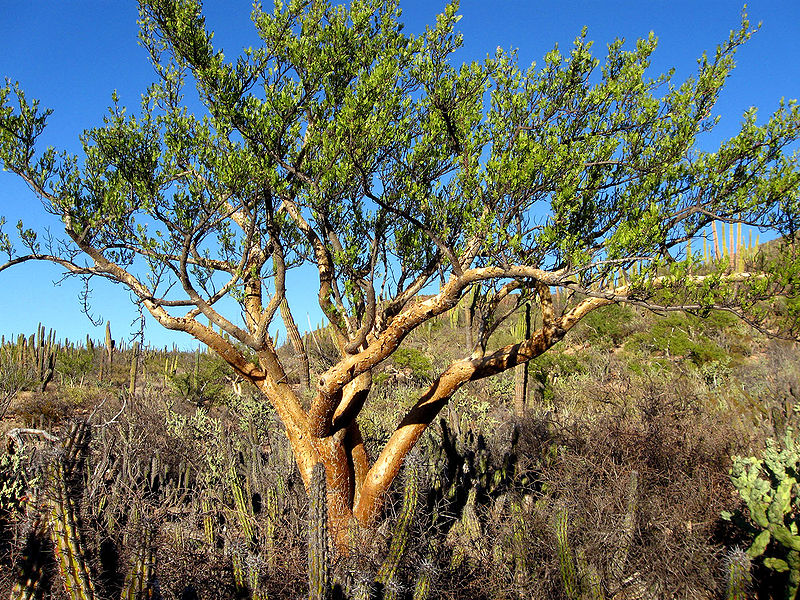
Contributor
- Topics: Archive
Every now and again, a really important book comes along that needs to be on the library shelf of anyone serious about trees. So it is with New Trees, a tome commissioned by the International Dendrology Society, researched and written by John Grimshaw and Ross Bayton. For five years, this team combed through private and public collections and horticultural records in Europe and North America, with a goal of documenting the tree species new to cultivation within the last five decades.
Nearly twenty-five years ago, I added a complete set of Bean’s classic Trees and Shrubs Hardy in the British Isles (four volumes and a supplement) to my library. Bean’s mammoth work remains one of my most frequently referenced resources. Add Krüssmann’s Manual of Cultivated Broad-Leaved Trees and Shrubs, and it seemed that a plantsman’s library would be complete.
That’s all well and good, assuming the inventory of hardy plants had been fully accounted for during the golden age of plant exploration. Yet, even in my relative youth as a plantsman, I recognized numerous and glaring holes within these remarkable banks of data. That New Trees has a full 850 entries, with brief mention of many more, underscores the fact that plant discovery has hardly ceased.
New Trees is user friendly, provided the operating instructions are read. These are fully explained, and written in an entertaining and engaging style, in the introduction, with sections devoted to conservation, techniques of cultivation, the importance of wild collections, and notes on interpretation of the entries in the book.
There are 179 genera of trees covered here, including both gymnosperms (conifers and their kin) and angiosperms (flowering plants). Such familiar and commonly grown genera as Acer, Ilex, and Zelkova are stalwarts in the planted landscapes of both continents. However, there are a surprising number of genera covered that will be novel to even the most polished of plants people, including Ackama, Legrandia, Pitavia, and Tetraclinis—to name just a few.
In an agreeable style, Grimshaw introduces each genus, offering a taxonomic overview and comments on landscape worthiness and the degree of, and challenges to, cultivation. In addition to the actual entries of trees new to cultivation is an unabridged, alphabetical list of all known taxa held within each genus. These have been cross-referenced to the earlier texts by Bean and Krüssmann and updated to the current taxonomy when appropriate.
Under each genus, the individual entries are, like Bean, broken into two parts. Bayton tackles the botanical descriptions, discussing distribution, habitat, hardiness, and conservation status; a color photograph or a line drawing accompanies each entry. Grimshaw follows with commentary that—with apologies to Bayton—will capture the lion’s share of attention for most of us. In these, he discusses documented and anecdotal information on successful cultivation, where to observe the species in cultivation, and the individual(s) responsible for introduction.
Helpful keys are provided for both closely related species as well as complex taxa represented by numerous varieties.
I seldom write a review of book, when asked, unless I can write a good review. In this instance, I was honored to be asked to critique a work that I feel will become one of the most important horticultural references published in my lifetime.
Daniel J Hinkley, horticulturist
Indianola, Washington
Share:
Social Media
Garden Futurist Podcast
Most Popular
Videos
Topics
Related Posts

Ground Up Science for Greener Cities with Garden Futurist Dr. Alessandro Ossola
Spring 2023 Listen to the Podcast here. Alessandro Ossola is a scientist who gets very excited about the challenge of climate change allowing for an

Readying Urban Forests for Climate Realities with Garden Futurist Dr. Greg McPherson
Winter 2023 Listen to the Podcast here. “Going from the mow and blow to a more horticulturally knowledgeable approach to maintaining the landscape. And that

Welcome, Greywater, to the Garden
Summer 2022 Oh, summer: delightful warm air, tomatoes swelling on the vine, fragrant blooms on an evening stroll. When it’s warm and rainless, how is

Big Tree-Data and Big-Tree Data with Garden Futurist Matt Ritter
Summer 2022 Listen to the full Garden Futurist: Episode XV podcast here. We are in an environmental crisis right now in many parts of California








Responses